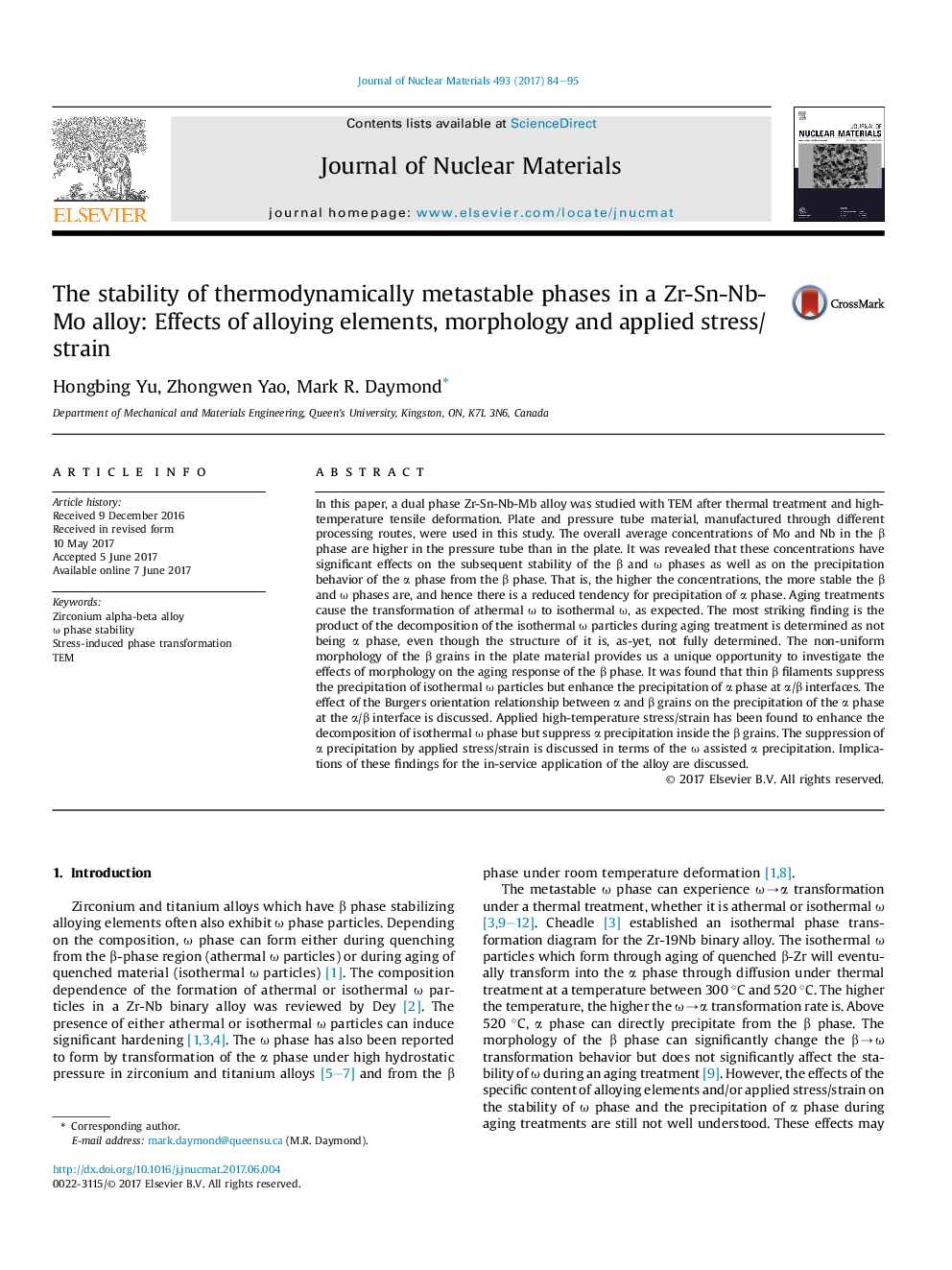| Article ID | Journal | Published Year | Pages | File Type |
|---|---|---|---|---|
| 5453935 | Journal of Nuclear Materials | 2017 | 12 Pages |
Abstract
In this paper, a dual phase Zr-Sn-Nb-Mb alloy was studied with TEM after thermal treatment and high-temperature tensile deformation. Plate and pressure tube material, manufactured through different processing routes, were used in this study. The overall average concentrations of Mo and Nb in the β phase are higher in the pressure tube than in the plate. It was revealed that these concentrations have significant effects on the subsequent stability of the β and Ï phases as well as on the precipitation behavior of the α phase from the β phase. That is, the higher the concentrations, the more stable the β and Ï phases are, and hence there is a reduced tendency for precipitation of α phase. Aging treatments cause the transformation of athermal Ï to isothermal Ï, as expected. The most striking finding is the product of the decomposition of the isothermal Ï particles during aging treatment is determined as not being α phase, even though the structure of it is, as-yet, not fully determined. The non-uniform morphology of the β grains in the plate material provides us a unique opportunity to investigate the effects of morphology on the aging response of the β phase. It was found that thin β filaments suppress the precipitation of isothermal Ï particles but enhance the precipitation of α phase at α/β interfaces. The effect of the Burgers orientation relationship between α and β grains on the precipitation of the α phase at the α/β interface is discussed. Applied high-temperature stress/strain has been found to enhance the decomposition of isothermal Ï phase but suppress α precipitation inside the β grains. The suppression of α precipitation by applied stress/strain is discussed in terms of the Ï assisted α precipitation. Implications of these findings for the in-service application of the alloy are discussed.
Related Topics
Physical Sciences and Engineering
Energy
Nuclear Energy and Engineering
Authors
Hongbing Yu, Zhongwen Yao, Mark R. Daymond,
